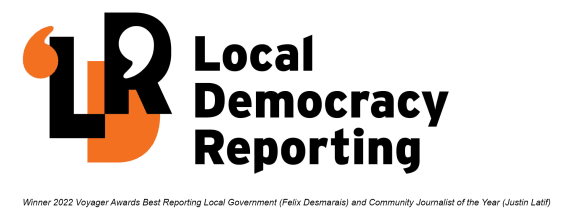
Significant Natural Areas on private farm land on the West Coast will sometimes capture areas with patches of indigenous trees left from previous felling, or areas of regrowth such as the Kānuka seen to the right in this view of a farm in the Waininihi Valley, in Westland. Photo: Brendon McMahon
A "heinous" imposition of new rules around Significant Natural Areas has prompted fear it will push West Coast landowners to cut down trees to avoid the implications.
The changes are a result of the National Policy Statement for Indigenous Biodiversity, which was pushed through Parliament in the final months of the Labour government.

The implications have been described as "heinous" by Ngāi Tahu, which is now considering its legal options.
Greymouth mayor Tania Gibson said she feared the move would simply drive private landowners to quickly "bowl over" trees to get ahead of the new policy.
"It's another whole chunk of the West Coast to be locked up," she said during a recent Te Tai o Poutini Plan (TTPP) meeting.
Work to accommodate SNAs had been "done to death" and the region felt "economically penalised" by the policy, she said.
"We need to make a stance and say we're not doing it … I'm sick and tired of this rubbish."
In July, the government announced tighter requirements for district councils to identify and protect areas of significant biodiversity. The measures are aimed at protecting native wildlife and at-risk habitats.
Councils must identify Significant Natural Areas in district plans, and those areas must be protected.
Te Runanga o Maakawhio chairman Paul Madgwick said the new SNA policy was "galling".
"We knew this was coming, as soon as that heinous piece of legislation was passed through Parliament," he said.
"I think it's really raw that Grey District has to go through it again. When they went through it 15 years ago, it caused a lot of pain in the district."
The proposed TTPP, which will succeed the current Grey, Buller and Westland district plans, is a blueprint for the new regional plans nationally under the Resource Management Act reforms. In its formulation, the TTPP has tried to anticipate the policy in the past four years.
This included a decision last year to include the Grey District's previous work to identify SNAs 15 years ago.
At the same time, Buller and Westland districts, which had not identified their SNAs, were given five years by the TTPP to identify significant areas.
But the final policy has thrown a few curve balls including the need to review the prior Grey District SNA work.
TTPP principal planner Lois Easton said they had taken "a wait and see approach" while including Grey District's SNAs into the new combined plan, and adopting a process for Buller and Westland to catch up.
Under the new rules, the TTPP must produce a plan by August 2028 to identify SNAs across the region.
This included a reassessment of the Grey SNAs to include "all the other vegetation" in the district.
The new rules also stipulate SNAs must now also be assessed on Māori land.
Madgwick said he really "felt the pain" of the imposition on private landowners but for Māori land it was even worse.
"We're talking about land that has never left Māori hands. This land was never under the jurisdiction of the Crown, and I think it needs to be tested in a court of law.
"It means these ecologists crawl over our land - and we're talking scraps left behind after the Crown purchases - regardless of the value of the land. We should have the right to withstand it.
"The whole thing is galling but for Poutini Ngai Tahu, we need to have a think about the next step."
West Coast Regional Council chairman Peter Haddock said the policy came at "a huge cost" to the region's councils.
"I don't know where we're going to get the money."
Haddock, previously a Grey District councillor for 15 years, said the previous SNA process was "very painful" and it resulted in unintended consequences.
"We know what happens, with people going in and clear felling [the trees]."
Local Democracy Reporting is Public Interest Journalism funded through NZ On Air.



